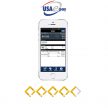
Top Risk Management Tools For Your Business
As a merchant, understanding how to mitigate against risks is one of the most important areas if you want to be prepared for potential problems that could impact on your trading. While every business will face its own unique risks, there are three specific areas every retailer should pay attention to: avoiding fraudulent transactions, understanding consumer behavior and website security.
Assessing Risks
Begin by assessing potential risk to your business. Aside from fraud, there’s the risk of stock getting damaged or going missing, or damage to your premises that stops you trading. Alternatively, your supplier might suddenly increase prices, thus reducing your potential profits. You also need to think of all the regulations that apply to your business and the risks that non-compliance could pose to your business.
Being in the retail trade, fraudulent transactions, the potential for viruses or the hacking of your website are also things you’ll need to consider. Draw up a list of all the potential dangers to your business, assess the probability of them occurring and prioritize the risks.
Setting Up A Risk Assessment Plan
Once you have a clear idea of the potential risks drawn up, you need to establish how you can minimize them and establish an action plan so you are prepared for the worse. Some of the dangers posed to your business can be easily managed. For instance, as a firewall to better protect your website, an up to date anti-virus program, using a secure payments processor to guard against chargebacks from fraudulent payment and having insurance in place in the event of stock damage or theft.
Install A Risk Management Software
There are numerous risk management software programs available including Simility, Fraud.net and FraudLabs.com. Depending on the product you buy, they each offer different features, including the ability to identify customers with a history of fraud, spotting fraudsters who are using proxy servers and checking geolocation. It can also limit the number of chargebacks your business experiences.
If you’re not sure if it is right for your business, take advantage of few free trials and see how it works. However, make sure you speak to your payment processer so you can understand the security measures that they already have in place, and you plan on installing additional software, check that it complies with the payment platform you’re using.
Reducing The Financial Risks
Research shows that cards not present, stolen credit cards and counterfeit cards are a significant issue in the United States, and card not present fraud is expected to soar to $19 billion by 2018.
Credit card fraud has always been a worry for the retail sector. However, following the recent introduction of EMV, there has been a surge in online fraud. Figures have soared by 300 percent, according to the last set of figures from the Global Fraud Index.
As a retailer, it’s essential that you find a way to limit your chances of fraudulent activity or you’ll be likely to be liable for any losses. Reduce your risk of financial fraud by implementing the following measures:
- Use a payment processor service. These come with built in checks to limit your chances of fraud and chargebacks.
- Set up an address verification system. This adds an extra layer of protection to your e commerce store. When an item is purchased online, the buyer will be asked to confirm their address details, if it doesn’t match the registered address of the credit card owner, the payment will be declined.
- Another useful risk management tool is the CVV2 number that is on the back of the card. This code protects both the retailer and the buyer from fraud, and confirms that the card was in the buyer’s possession at the time of the transaction. You can easily set up your payment gateway to accept a CVV2 number.
Layer Your Website Security
When you assessed the risks, the possibility of your company website/ecommerce business being brought down by a virus should have been high on the list. However, as a retailer, you have the additional responsibility of keeping your customers’ details safe. Part of this involves having an up to date anti-virus, and with research showing that SME’s are an increasing target of phishing attacks and hacking attacks, it’s never been more important to make sure your anti-virus program is up to date.
However, having anti-virus isn’t enough. As part of your risk management strategy, you’ll need several layers of security including:
- Installing a firewall to keep hackers out.
- Making sure all areas of the site are secure. This includes address forms and any other applications on your website that could be exploited by a hacker.
- Requiring that all your customers have a password that can’t be easily guessed – make the use of caps, letters, numbers etc. necessary.
- Adhering to data protection guidelines/security in case a hack occurs.
- Holding on to as little customer information as possible. You’ll need e mail and postal addresses etc., but don’t hold on to payment details such as CVV2 numbers or card numbers in case your site is hacked.
- Keeping all your applications updated. These often include patches to protect against the latest vulnerabilities, which soon become a target for hackers.
- Protecting your site from DDoS attacks. High profile DDoS attacks often grab all the media attention – but this is a significant problem for SMEs as well. Use tools like Cloudflare or Incapsula to limit these risks.
Monitor Customer Behavior
Understand how to recognize suspicious behavior when it occurs; you can use monitoring software such as Woopra and Clicky for these purposes. As well as being an important risk assessment tool, software will provide consumer insights that can help to build your business and increase conversions by personalizing offers to your customers.
Conclusion:
Assessing risks, learning how to monitor them and having measures in place can all help to boost your bottom line by reducing chargebacks. If you haven’t already, start by creating a risk assessment plan for your business and put a strategy in place by using the right tools to mitigate against the potential dangers your company faces.
Ready to get started?
Get in touch or create an account





